If you're having trouble warming up your Ford and improving fuel economy, you're not alone. These are the two main symptoms of an open-loop fault. We have researched the best solution to fix this problem for you.
An open loop fault happens when the coolant and oxygen sensors fail to reach their operating temperature. You can easily fix this problem by replacing the coolant temperature sensors and oxygen sensors.
An open loop fault is an issue that occurs when the air/fuel mixture is incorrect, and the car runs poorly. Read on to learn more about what an open loop fault is and how to fix it.
Open Loop Fault On Ford Vehicles
An open loop fault in a car refers to a situation where the car's brain, the PCM (powertrain control module) fails to correctly control the air-to-fuel ratio of the engine. This is caused by a bad oxygen sensor.
This causes the car to use the pre-programmed data to ascertain the air-to-fuel ratio and then adjust the ratio accordingly. The result is that the car does not achieve the desired air-to-fuel ratio, and so the engine will run rich or lean.
You might be wondering what the pre-programmed air-to-fuel ratios are there for. If they can't do any good then why does Ford put them in there in the first place?
Well, it's indeed the intention of Ford to increase fuel efficiency and to ensure the engine is running optimally, and that's why we have these pre-programmed ratios.
However, there are two issues with this. Firstly, these pre-programmed ratios discount external factors that happen and influence the combustion process in real-time.
For example, the ambient air temperature, air flow rate, air pressure, and humidity are important factors that affect the air-to-fuel ratio. In addition, the MAP and MAF sensors are disabled during an open-loop fault.
As a result, the pre-programmed air-to-fuel ratio may not be optimized for the current engine operating conditions. These pre-programmed data are there whenever the oxygen sensors fail to keep the vehicle running to bail you out temporarily.
The basic concept of an open loop fault is discussed in detail below:
What Is An Oxygen Sensor Used For?
The oxygen sensor is a small tube that looks like a spark plug located in the exhaust pipe. It monitors the amount of unburned oxygen in the exhaust gas. When the oxygen levels are low, the sensor sends a signal to the PCM (power control module) to increase the oxygen content in the mixture.
The same thing happens when the oxygen level in the vehicle is high. The sensor will send a signal to the PCM to decrease the amount of oxygen in the mixture.
Your vehicle's oxygen sensors are designed to detect when your car's engine is not running at optimal efficiency, which is when the oxygen content in the exhaust is not balanced with the oxygen content in the fuel.
What are MAP and MAF sensors?
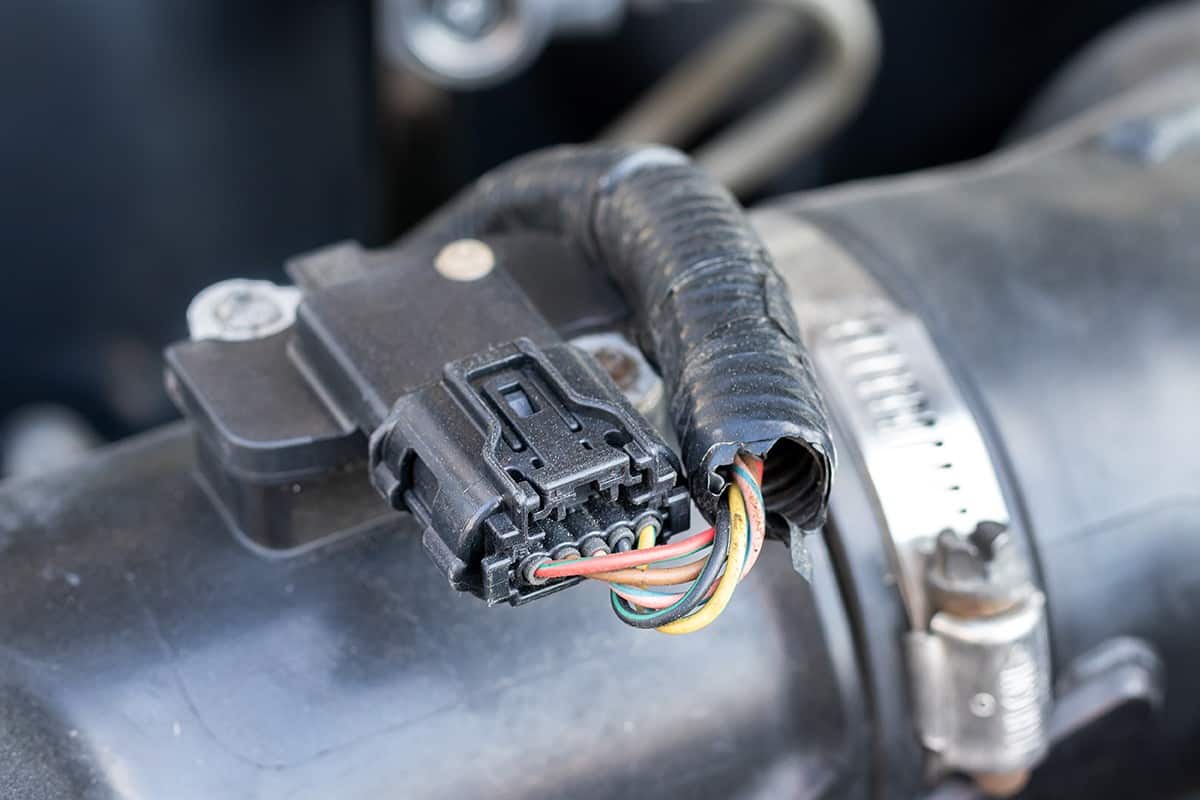
Manifold absolute pressure (MAP) sensors are part of a sensor system that monitors fuel and engine air quality. They provide a reading of the air pressure inside the car.
The air pressure reading is then relayed to the PCM so it can process the required fuel to be injected into the valves
Mass airflow sensors, on the other hand, are electronic devices that monitor the amount of air that flows through your vehicle's engine.
MAFs are designed to provide accurate data regarding the air intake levels, which is used to adjust your vehicle's fuel injection settings and air-to-fuel ratio.
How To Replace Coolant Temperature Sensor?
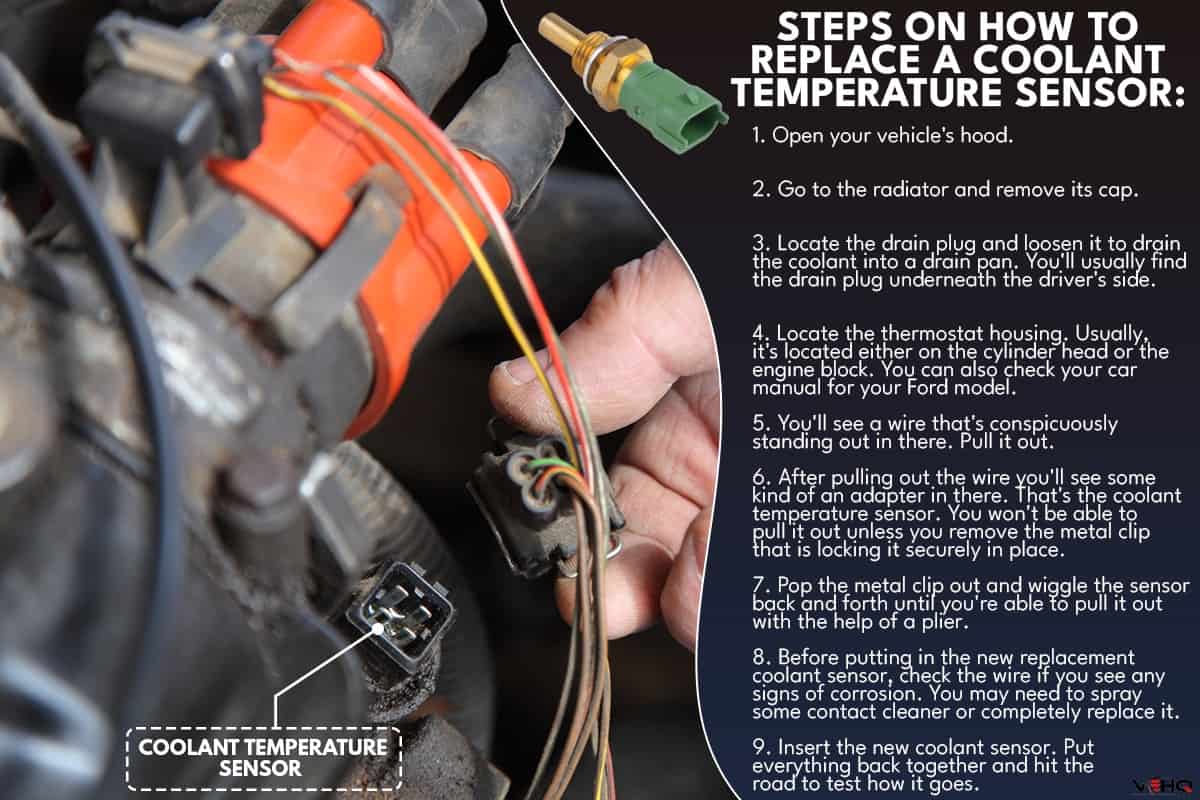
- Open your vehicle's hood
- Go to the radiator and remove its cap.
- Locate the drain plug and loosen it to drain the coolant into a drain pan. You'll usually find the drain plug underneath the driver's side.
- Locate the thermostat housing. Usually, it's located either on the cylinder head or the engine block. You can also check your car manual for your Ford model.
- You'll see a wire that's conspicuously standing out in there. Pull it out.
- After pulling out the wir,e you'll see some kind of an adapter in there. That's the coolant temperature sensor. You won't be able to pull it out unless you remove the metal clip that is locking it securely in place.
- Pop the metal clip out and wiggle the sensor back and forth until you're able to pull it out with the help of a plier.
- Before putting in the new replacement coolant sensor, check the wire if you see any signs of corrosion. You may need to spray some contact cleaner or completely replace it.
- Insert the new coolant sensor. Put everything back together and hit the road to test how it goes.
See it live in action below:
How To Replace Oxygen Sensor?
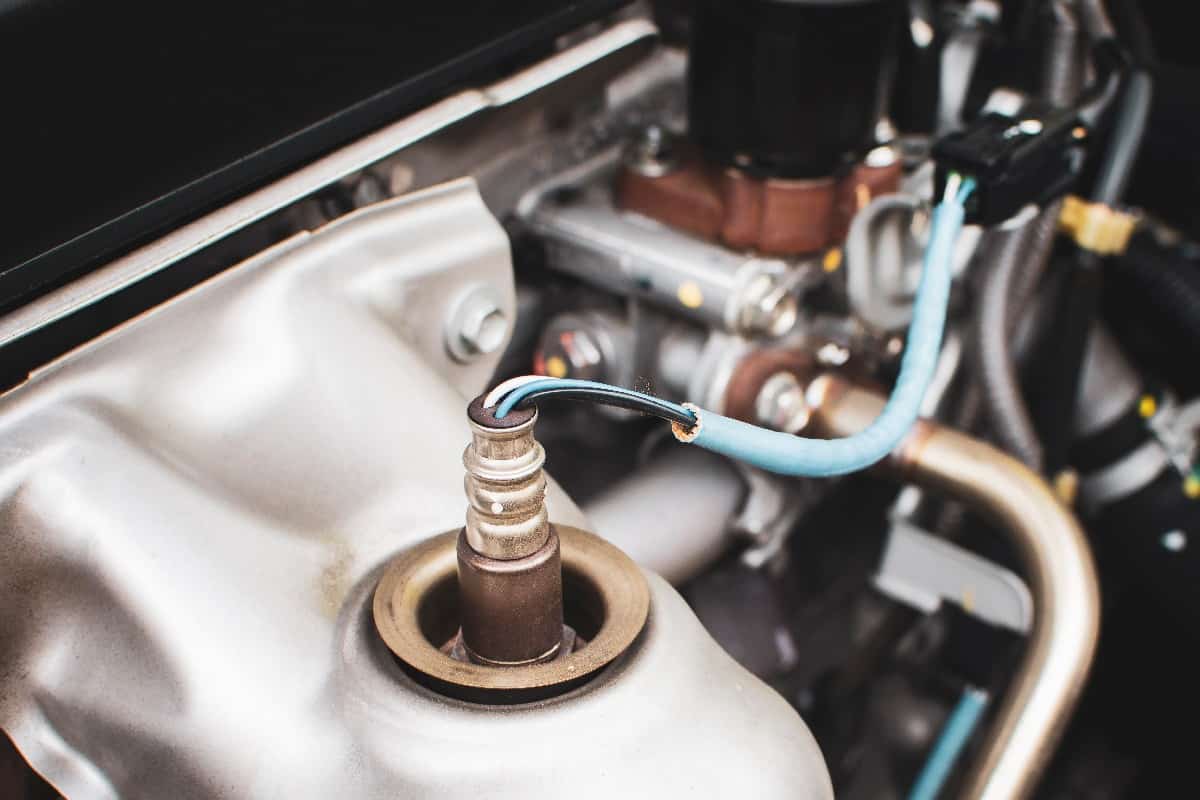
- Jack the vehicle up on the reinforced part of the door sill (passenger side, near the exhaust pipe).
- Remove the engine undertray. You'll see a bunch of rivets and screws, and you'll have to remove each of them. Take note of how the undertray engages with the subframe so you can easily slide and lock it into place when putting it back on.
- You'll see the oxygen sensor exposed once the tray is removed. It looks like a spark plug that's fitted onto the exhaust pipe.
- Unplug the wire and slide a split-type deep socket between the wire to remove the sensor. Unscrew to loosen the sensor.
- Install the new oxygen sensor. For optimal results, apply anti-seize grease to the threads. Screw and tighten the sensor. Don't forget to plug in the opposite end of the wire.
- Put the engine undertray back together.
*Always check your car manual for your Ford model.
The video below demonstrates the entire process:
How Much To Replace Oxygen Sensor?
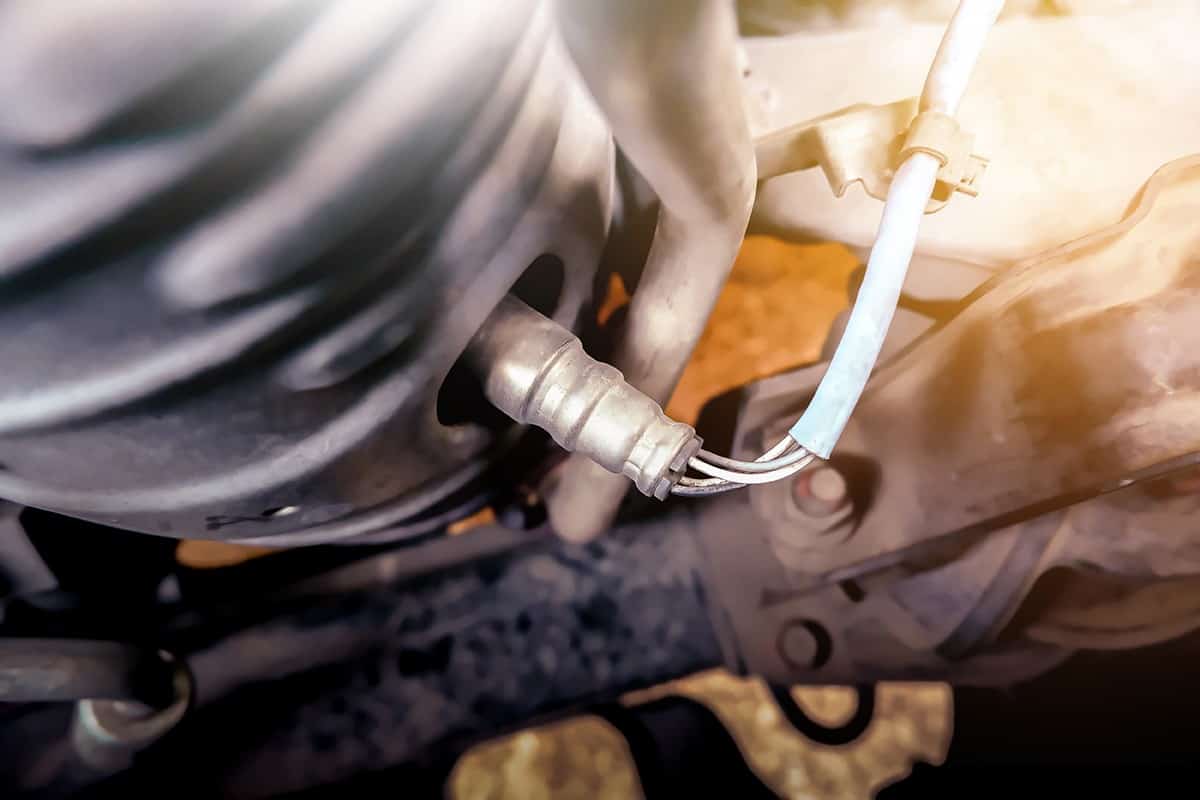
A lot of people think that they can save a lot of money by simply buying used parts for their cars. But, when it comes to oxygen sensors, this isn't true. You're not going to save yourself a ton of money by buying secondhand sensors.
You can expect to pay anywhere between $220 to $300, that's $200 for the labor cost and the difference for the sensor. This may seem like a lot of money to pay, but it's a small price to pay for your well-being and safety.
Check out this universal oxygen sensor on Amazon.
Is It Safe To Drive A Car With A Bad Oxygen Sensor?
A failing oxygen sensor will affect your ability to get good gas mileage. However, it's possible to drive with a faulty oxygen sensor.
This is because modern vehicles have a pre-programmed air-to-fuel ratio that they can temporarily use when the oxygen sensor is not functioning optimally.
You can drive your car for a couple of days but it's highly recommended to get it serviced as soon as you can.
What Are The Main Reasons Why Oxygen Sensors Go Bad?
Oxygen sensors, like most electronic components, work better when they are clean. Your car's oxygen sensor must be cleaned regularly, as it will help ensure that your car is functioning at its best.
You see, your oxygen sensors live in your vehicle's exhaust system. So you should expect combustion byproducts to constantly be blowing past your oxygen sensors.
If your oxygen sensors are dirty or covered with oil ash, they will not be able to accurately measure the amount of oxygen in your exhaust.
How To Clean Oxygen Sensor?
- Follow steps 1 to 4 on how to remove the oxygen sensor.
- Spray brake cleaner on the sensor. Let it sit for some time.
- Use 800-grit sandpaper and sand the surface and every nook and cranny of the sensor.
- Clean and unclog the small holes in the sensor using a thin wire.
- Wipe the sensor dry.
Check out this brake cleaner on Amazon.
What Is A Heating Element In An Oxygen Sensor And What Does It Do?
In a car, the combustion process has many components and parts that require a certain temperature before they operate. The most crucial component is the oxygen sensor.
A heating element is placed in the sensor to increase the temperature. This ensures the sensor can heat up quickly so you can get the car up and running in no time. The oxygen sensor needs to reach at least 600 degrees for the car to be ready to run.
Does An Oxygen Sensor Have A Fuse?
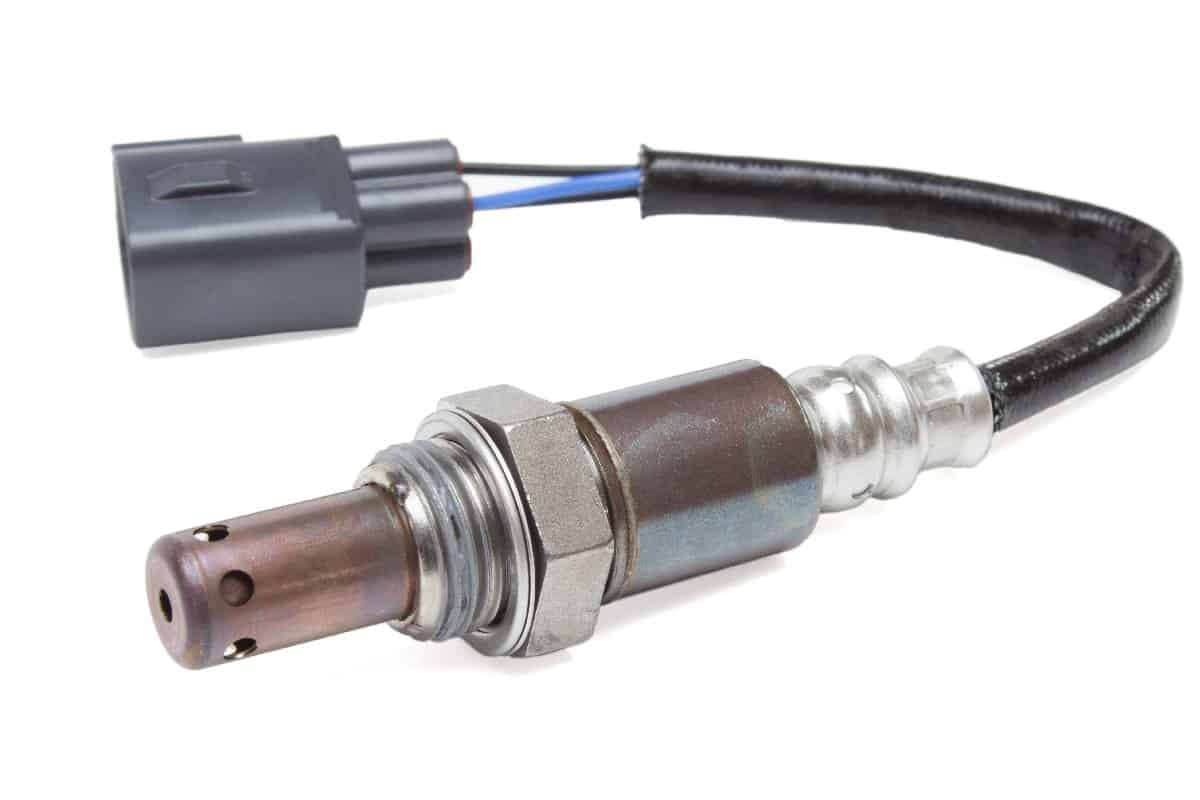
Yes, it does have a fuse. It is a best practice to check the fuse's condition after cleaning or replacing your oxygen sensor.
How Long Can You Expect An Oxygen Sensor To Last?
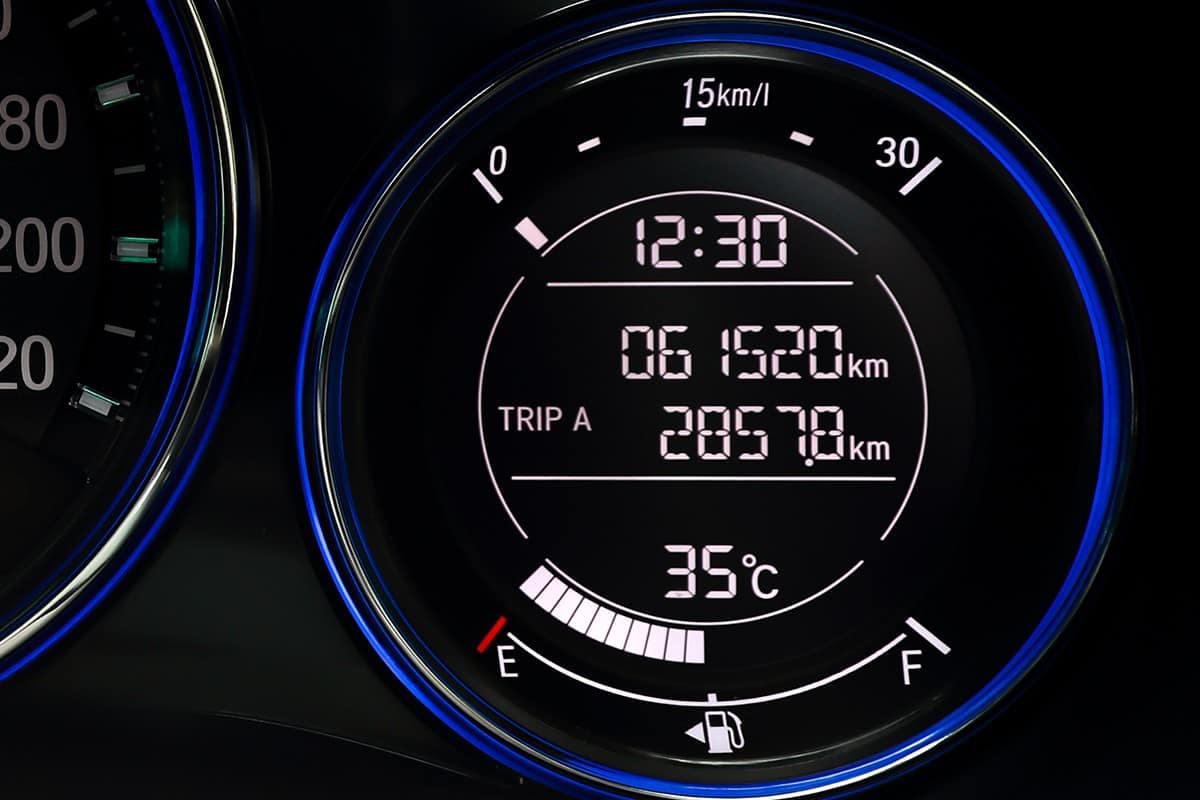
The oxygen sensor will work for 60,000 miles and up to 90,000 miles if the engine is well-maintained. If you want to increase the lifespan of your oxygen sensor, you can do it by cleaning it regularly.
Cleaning the oxygen sensor will help improve its efficiency and reduce the engine's exhaust emissions. As a result, the engine will run better and improve the vehicle's performance.
If your car is showing symptoms like hesitation, rough idle, stalling, or poor fuel economy, the oxygen sensor is probably malfunctioning and could be the culprit. In addition, you will also get a check engine light with an error code of P0030 for this issue.
In Closing
It is important to have sensors that reach their operating temperature to ensure the car's systems are functioning properly. If sensors are too cold, they won't be able to read the data correctly.
If sensors are too hot, they will shut off prematurely and not transmit accurate data to the ECU. It is crucial to keep sensors at their ideal operating temperature to prevent malfunctions.
You might also like:


